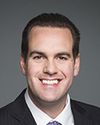I think the overall circumstance of health care in Canada is complex, so it would not be appropriate for me to say yes or no to that question because I'm certainly not an expert in that nature of health policy. What I can say is that, given the totality of what we're dealing with, I think this would certainly be something that might enter further discussions. Obviously, that would involve the federal government, the provinces, and physicians.
Certainly, what we're talking about here and what we're saying is that this one particular tax policy is something that we have major concerns about. This isn't necessarily something that would make a vast, humongous change to the rest of health care; again, we're talking about unforeseen circumstances and possible unforeseen deleterious effects on the health care system from a massive policy change. I certainly would not feel comfortable saying, “Yes, let's go there.” I can't do that.



